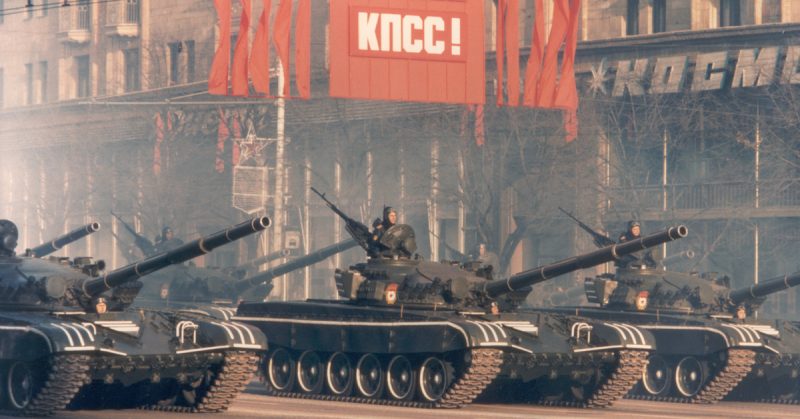Through time armies have recognized that, in times of peace, they need to practice going to war. Even the best thought out plans need to be tested to ensure that they will work as intended and it is difficult to prove a plan when the bullets are flying!
The armed forces of the Soviet Union were no different, and this potent armed force has run some gigantic and thorough exercises, all designed to test the efficiency of many units working together. The exercises throughout the 20th century served as practice runs, but also as a show of force to potential adversaries.
The degree of operational efficiency of the Soviet forces was debated then and still today, but the sheer size of the exercises were impressive in and of themselves.
1935 – Large Kiev Maneuvers
Before 1946, the Soviet Armed Forces were called the Red Army; so, it was that the Red Army held a series of rapid deployment exercise around the central sections of Ukraine between the 12th to the 17th September 1935.
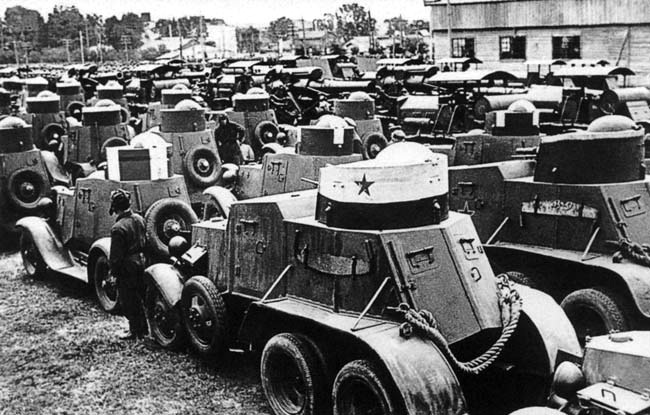
The Russians had learned, during WWI, of the horrors of slow moving trench warfare and they were determined that never again would their armed forces get bogged down in such a useless type of fighting.
Their plan called for an overwhelming response to any threat where all branches of the Red Army would be flung at any invasion force to break through the enemy front and reach its rear as quickly as possible.
In this series of exercises, 60,000 service personnel, 1040 armored cars and tanks and 470 aircraft took part. They tested the ability for a combined force of aviation, infantry, cavalry, and tanks to overrun the front lines of the invading army and reach the rear of the invaders before they could think of resupply or reinforcement. The drill included the largest mass landing of paratroopers at the time when 1,188 soldiers were set the task of taking an airport.
1954 – Operation Snowball (Totskoye nuclear exercise)
The first military exercises carried out by the Soviet Army that included a nuclear strike took place in the Totskoye range of mountains in southern Russia on 14th September 1954. The objective of the exercise was for Soviet troops to test how they would operate on a battlefield where the enemy had been subjected to a nuclear explosion. 320 planes, 6,000 vehicles, 600 tanks, 500 artillery pieces, and over 45,000 members of the 270th Rifle Division took part in the exercise.
Early on the morning of the exercise, a Soviet bomber dropped a 40-kiloton atomic weapon that exploded 350 meters above the Totskoye Mountains, and about 13 kilometers from the tiny rural village of Totskoye.
After the blast, a reconnaissance plane took off to report on the movement of the radioactive cloud, and the suspected most dangerous areas were reconnoitered by special troops who were all protected with protective uniforms, gas masks, tinted glasses, and personal dosimeters to measure the level of radiation. They drove in specially armored personnel carriers and kept to a distance of 450-650 yards from the blast epicenter.
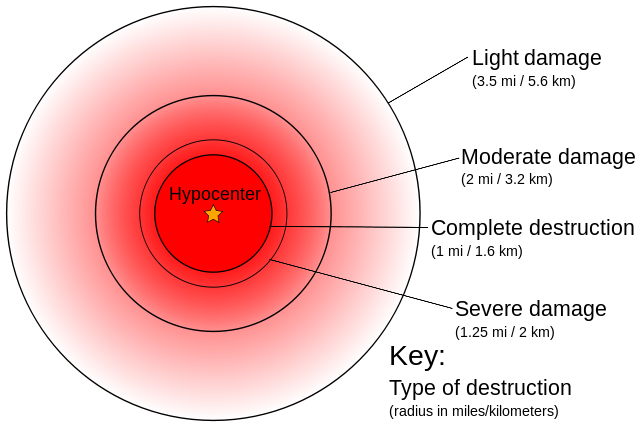
The rest of the military entered the area two and a half hours later and, according to the data, they received very low levels of radiation exposure. The military hierarchy had decontamination centers set up to decontaminate the troops after the exercise, but they were shut down when it was realized that they did not require them.
After the fall of the Soviet Union, allegations of increased cancer risk in the surrounding areas came to light. After several investigations in 1994-1995, four Russian and four American scientists re-examined the area and determined that there was no evidence of raised radioactivity levels in the soil and that the levels were normal.
The Soviets only conducted one further similar test using nuclear weapons. That was done in 1956 and held in Kazakhstan. The USA held considerably more tests. Their test series known as Desert Rock involved eight tests.
1970 – Ocean 70 or Ocean-100 (Operation Okean)
This was the largest naval exercise in Soviet history and was held between the 14th April and the 5th May 1970 to celebrate the 100th anniversary of the birth of Vladimir Lenin.
The exercise took place all over the world and included the Soviet Northern, Black Sea, Baltic, and Pacific fleets. Consisting of 84 surface warships, 45 other vessels, 20 Naval Aviation regiments, eight Anti-Aircraft and Long-Range Aviation regiments, and 15 nuclear-powered submarines along with 65 diesel-powered submarines, it was one of the most ambitious naval exercises ever attempted.
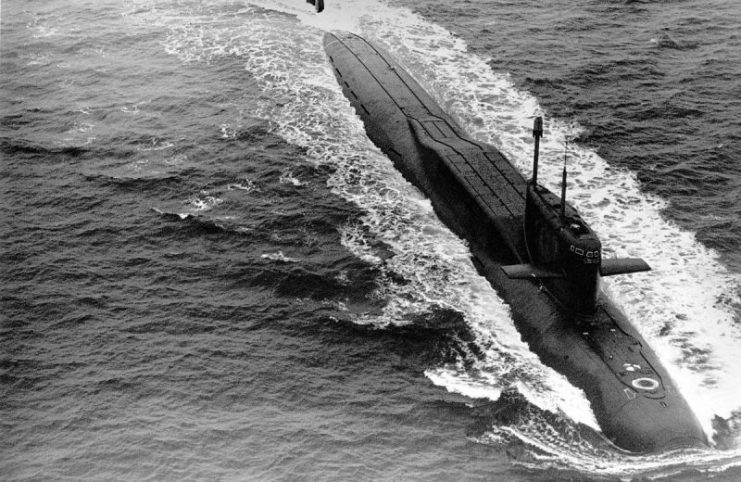
The exercise had one aim in mind; to show NATO, and especially the USA, that Russia was no longer going to be considered influential on land only. The training met its objective as the NATO commanders that monitored the exercises were impressed at how well the young Russian fleet managed to coordinate its action and perform at a higher level of effectiveness than anticipated.
The Americans had long considered their fleet to be superior to all other navies, but this exercise was a wake-up call for them. Of particular concern was how the Soviet fleet set about the destruction of an Aircraft Carrier Strike Group during a severe Atlantic storm on the 23rd to 25th April as the American naval strategy was built around Aircraft Carrier Strike Groups.
1981 – West 81 (Zapad-81)
This stands today as one of the most extensive and most impressive military exercises ever held. It took place from the 4th to the 12th September 1981, in both the Soviet Union and several of her Warsaw Pact allies.
Over 100,000 service personnel undertook exercises to practice troop landings behind enemy lines, and the rapid breach of enemy defenses in which the objective was to destroy the enemy resistance within a few days. The ground forces were ably supported by the Air Force to provide transport for the mass troop deployment behind enemy lines.
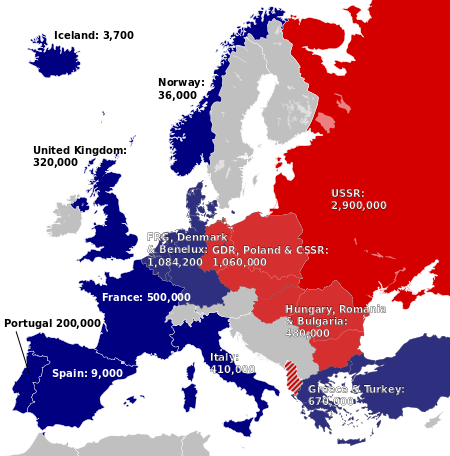
The objective of this exercise was to, once again, show NATO the strength of the Soviet forces. Even without the use of nuclear weapons, the Soviet troops demonstrate their ability to defeat any other armed force.
In addition to conventional warfare, the Soviets took the opportunity to test army control systems and the latest in precision-guided missiles. Many of the tests and their results were classified top secret and remain so to this day.
1982 – Shield-82
This series of exercises were intended to see how the Soviet forces would perform under simulated nuclear attack conditions and took place from the 18th June 1982. The first phase of the attack consisted of the launching of cruise and ballistic missiles by the Soviet Strategic Missile Force using submarines, strategic bombers, warships, and all military missile launch ranges.
Read another story from us: 7 Soviet Cold War Self-Propelled Anti-Aircraft Weapons
The Western press dubbed this part of the exercise as the ‘Seven-hour Nuclear War’ as the entire practice took seven hours to complete.
Once the missile launch was complete, the ground forces took over and conducted a number of exercises in Bulgaria, ending on the 30th September 1982.
